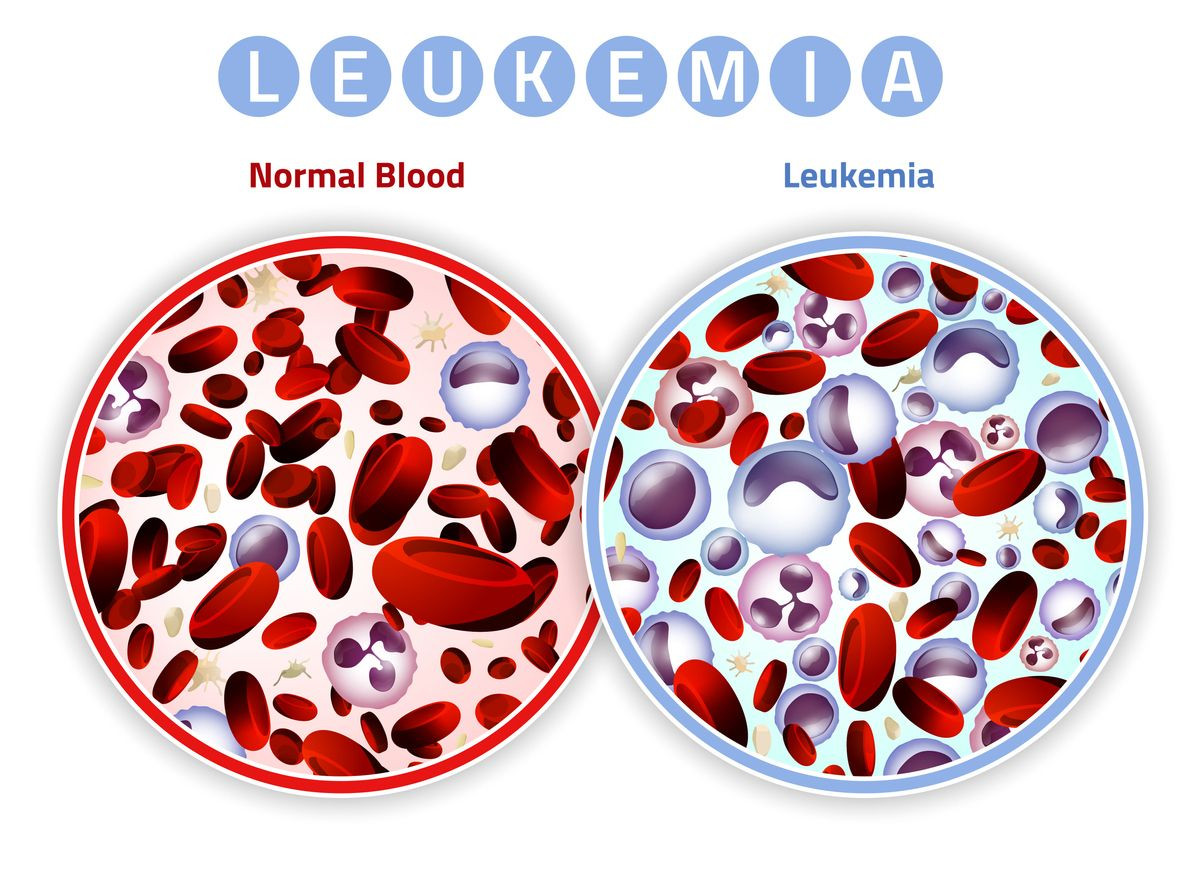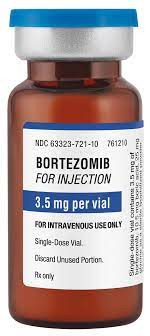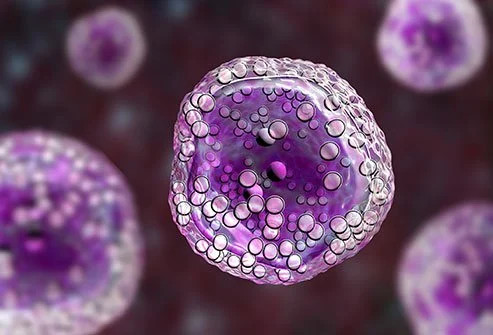Definisi
Immunophenotyping adalah pemeriksaan diagnostik yang dilakukan untuk mengidentifikasi baik sel normal dan sel yang ganas atau abnormal. Pada prosedur ini, bisa dilihat bila ada penanda berbeda yang umumnya dikaitkan dengan jenis kanker darah (leukemia) dan kanker kelenjar getah bening (limfoma) tertentu.
Bisa terlihat perbandingan antara sel-sel sistem kekebalan tubuh yang sehat dengan sel-sel yang ganas untuk mengidentifikasi berbagai jenis leukemia dan limfoma pada seseorang. Hasil temuan juga dapat digunakan untuk memperkirakan tingkat agresivitas pada kanker, menilai potensi respons tubuh terhadap pengobatan yang diberikan, dan mengidentifikasi prognosis (kemungkinan kesembuhan atau perburukan penyakit) beberapa jenis kanker darah.
Leukemia dan limfoma terjadi akibat sel darah putih yang bermutasi dan terus bertambah banyak secara tidak terkendali. Karena sel-sel tersebut abnormal, maka mereka tidak memiliki kemampuan untuk melawan infeksi atau melakukan tugas layaknya sel darah putih yang sehat. Karena sel sudah bermutasi, sel-sel ini juga tidak mati secara normal sesuai siklus hidupnya dan mulai menumpuk di dalam sumsum tulang, kelenjar getah bening, atau jaringan tubuh lainnya. Ketika penumpukan sel-sel abnormal di dalam kelenjar getah bening terus berlanjut, hal ini akan diikuti dengan pembengkakan kelenjar getah bening. Kanker kelenjar getah bening atau limfoma terkadang juga memengaruhi darah dan/atau sumsum tulang.
Selain penerapan prosedur ini pada kanker darah, immunophenotyping berfungsi sebagai prosedur diagnostik ampuh yang dapat dimanfaatkan pada beragam penyakit kekebalan tubuh (imunodefisiensi).
Kami juga memiliki artikel mengenai leukemia yang bisa Anda baca di sini: Leukemia - Definisi, Faktor Risiko dan Tata Laksana.
Indikasi
Ada beberapa indikasi dilakukannya prosedur immunophenotyping pada seseorang, yaitu:
- Bila Anda menunjukkan gejala dan tanda yang diduga disebabkan oleh kanker leukemia atau limfoma, pemeriksaan ini bisa direkomendasikan oleh dokter untuk membantu diagnosis dan klasifikasi kanker sel darah
- Untuk memastikan apakah pengobatan yang diberikan akan berjalan efektif dalam mengobati kanker
- Untuk mengetahui apakah penyakit kambuh kembali setelah pengobatan berhasil (penyakit rekuren) atau tetap ada meskipun telah diobati (penyakit residual) untuk menilai kemanjuran pengobatan
- Untuk memperkirakan perkembangan atau prognosis kondisi pasien
Kontraindikasi
Tidak ada individu yang dikontraindikasikan dalam melakukan pemeriksaan ini. Setiap orang bisa menjalani pemeriksaan immunophenotyping.
Persiapan Sebelum Pemeriksaan
Tidak ada persiapan khusus yang perlu dilakukan sebelum melakukan pemeriksaan ini. Pastikan bahwa dokter Anda mengetahui semua obat, vitamin, suplemen, atau obat herbal yang sedang Anda konsumsi secara rutin. Obat-obatan yang dimaksud juga mencakup semua obat yang dijual bebas dan zat terlarang yang mungkin Anda konsumsi.
Biaya pemeriksaan immunophenotyping kemungkinan tinggi, dan beberapa perusahaan asuransi dapat memerlukan persetujuan terlebih dahulu sebelum pemeriksaan ini bisa dilakukan. Konsultasikan dengan dokter dan perusahaan asuransi Anda mengenai prasyarat yang mungkin diperlukan.
Prosedur Pemeriksaan
Immunophenotyping dapat dilakukan pada banyak sampel pemeriksaan, seperti darah, sumsum tulang, atau spesimen tubuh lainnya, untuk mendapat informasi lebih lanjut. Sampel darah bisa diambil melalui jarum yang disuntikkan ke dalam pembuluh vena. Tenaga medis ahli dapat melakukan prosedur aspirasi sumsum tulang dan biopsi untuk mendapatkan sampel sumsum tulang dari tulang panggul.
Sampel kelenjar getah bening atau jenis jaringan lainnya terkadang bisa diambil melalui prosedur aspirasi jarum halus (FNA, Fine Needle Aspiration) atau biopsi. Spesimen cairan tubuh dapat diambil dengan cara memasukkan cairan ke dalam wadah khusus atau dengan mengaspirasi atau menghisap sampel cairan dengan jarum suntik yang dimasukkan ke dalam rongga tubuh.
Pada pemeriksaan ini, sampel yang sudah diambil akan melewati serangkaian prosedur. Kemudian, epitopnya (bagian antigen yang berikatan dengan antibodi) akan diwarnai dan diperiksa dengan menggunakan alat bernama flow cytometer.
Nilai Normal dan Abnormal
Hasil dan temuan penting dari pemeriksaan immunophenotyping bisa berbeda sesuai usia. Laporan dan nilai laboratorium standar pada berbagai lini sel dan protein permukaan yang sedang diselidiki juga dapat bervariasi.
Kehadiran antigen pada sel sebagai penanda suatu zat asing yang memasuki tubuh, seperti yang ditemukan menggunakan pemeriksaan ini, akan membantu dalam mengidentifikasi sel. Pola antigen yang ditunjukkan oleh sel normal menjadi tanda dari jenis sel dan tingkat maturasi sel. Hasil yang diperoleh dari analisis pemeriksaan immunophenotyping pada sampel akan dibandingkan dengan pola antigen yang diamati pada sel "normal" serta sel abnormal, seperti yang ditemukan pada limfoma dan leukemia.
Hasil dan Saran (Pemeriksaan Lanjutan)
Hasil pemeriksaan immunophenotyping akan dianalisis bersama dengan riwayat kesehatan, hasil pemeriksaan fisik, tanda dan gejala, serta seluruh pemeriksaan laboratorium oleh dokter Anda, dalam mendiagnosis penyakit Anda. Kondisi setiap orang akan bervariasi antara satu sama lain.
Biasanya, hasil pemeriksaan immunophenotyping yang abnormal bisa ditemukan pada:
- Leukemia
- Leukemia mieloid akut (AML)
- Leukemia limfoblastik akut (ALL)
- Leukemia limfositik kronis (CLL)
- Mieloma multipel
- Limfoma non-Hodgkin mempengaruhi sel B dan sel T
- Imunodefisiensi variabel umum (CVID)
Konsultasikan ke Dokter yang Tepat
Konfirmasi diagnosis leukemia atau limfoma akan tergantung dengan hasil analisis visual dari pemeriksaan apusan darah tepi, biopsi sumsum tulang, dan/atau aspirasi untuk mengidentifikasi jenis sel tertentu. Berdasarkan hasil pemeriksaan immunophenotyping, tenaga kesehatan profesional dapat menilai kemungkinan kemanjuran pengobatan dan intensitas pengobatan yang diperlukan oleh pasien. Dokter Anda dan tim dokter akan menginformasikan mengenai rencana pengobatan selanjutnya untuk kanker Anda berdasarkan hasil dari immunophenotyping dan pemeriksaan relevan lainnya.
Anda bisa berkonsultasi dengan dokter spesialis onkologi agar bisa mengetahui hasil pemeriksaan Anda dengan lebih mendalam. Memahami hasil pemeriksaan dilakukan dengan mempertimbangkan hasil tes bersama dengan kondisi kesehatan, faktor risiko, dan gejala yang Anda miliki.
Mau tahu informasi seputar hasil pemeriksaan laboratorium, radiologi, dan lainnya? Cek di sini, ya!
- dr Hanifa Rahma
Immunophenotyping. (2023). Retrieved 30 January 2023, from https://stanfordhealthcare.org/medical-tests/i/immunophenotyping.html
Immunophenotyping by Flow Cytometry. (2021). Retrieved 30 January 2023. from https://www.testing.com/tests/immunophenotyping-flow-cytometry/
Immunophenotyping. (2022). Retrieved 30 January 2023. from https://www.ncbi.nlm.nih.gov/books/NBK558927/












